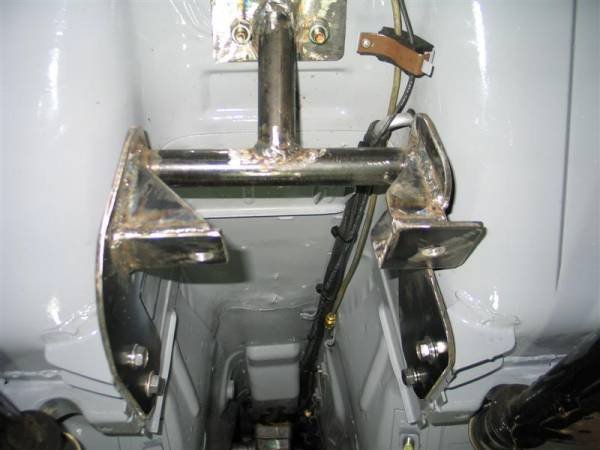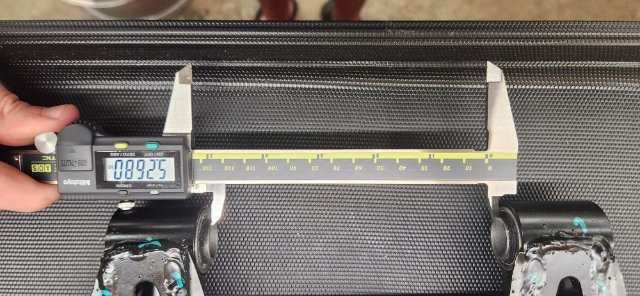
calZ
Donating Members-
Posts
659 -
Joined
-
Last visited
-
Days Won
19
Content Type
Profiles
Forums
Blogs
Events
Gallery
Downloads
Store
Everything posted by calZ
-
HybridZ Apparel Order Thread - 100% of Profits Will Be Donated, round 5
calZ replied to cockerstar's topic in Vendor's Forum
1 x Hoodie Dark Heather XL 1 x T-shirt Dark Heather Gray L 90278 Thanks so much for doing this! -
HybridZ Apparel Order Thread - 100% of Profits Will Be Donated, round 4
calZ replied to cockerstar's topic in Vendor's Forum
Personally, I'd prefer something done a shirt printer. I've never had much luck with the iron-on kind. If @cockerstar wants to start taking pre-orders, I'm in for a hoodie and t-shirt at a minimum -
You used to be able to get a billet spray bar from Larry Hassler. I'm not sure if he's still making them or not. 626-358-2885 was his number. If you give him a call, please report back and let us know what his current price/availability is. It's always nice to know the options.
-
There's also this option, which is meant for EFI conversions. It allows you to use a retrofit in-tank pump, or an OEM pump if you're going LS swap or similar. https://www.vintagetanksolutions.com/products
-
Diff Mount to fit 350Z R200 Short Nose in 75 280Z?
calZ replied to HusseinHolland's topic in Nissan V6 Forum
-
Can't get images to post/upload from my computer.
calZ replied to rturbo 930's topic in Site Support
-
Can't get images to post/upload from my computer.
calZ replied to rturbo 930's topic in Site Support
How are you inserting it? "Add files" and then browsing to the file location? That's what I did for the photo below, though I'm on a phone rather than a PC. -
He also mentioned speed, but didn't show the data. The faster you go, the less angle you can get away with. You usually run autocross, correct? You'll be able to get away with more angle than a road racer. You could always just make an adjustable flat plate diffuser with a flexible transition and then dial in the angle with tufts and a camera. Once you know where your limit is, you could build something more permanent.
-
That was a good read. Thanks for the link. That makes sense to me. A small separation bubble means you're stressing things to the max. You see the same thing on the top side of a wing just before stall. Max performance, but you're right on the ragged edge. You stall as soon as the bubble starts expanding, like his pictures show. To me, a device being "separated" means it's completely blown up. I did a poor job of communicating that I think.
-
Something else that's just kind of assumed in all this is that your underbody is isolated from the outside air. If you do a great job of shaping the underside of the car but don't have it sealed off, you're just going to draw in air below the doors and it will ruin all the low pressure you worked hard for. F1 achieves this using strong vortices to "seal" the sides of the car, but sideskirts are a lot simpler.
-
100%. A lot of people think diffusers are only to help create downforce, but the reason they're on basically every road car now is for drag. When you're driving along, assuming no wind, you're going through perfectly still air. Any air that is not perfectly still once you've passed has had work done to it. Diffusers allow higher speed, lower pressure air below the car slow down and regain pressure, getting closer to ambient conditions. In a perfect(impossible) world, it would leave the back end of your car with ambient pressure and zero velocity. That would equate to no drag. Blunt rear ends just dump all that air into the freestream without recovering any energy from it. This is all basically trying to make the whole car a wing. Capture some air, force it to accelerate under the car, then allow it to slow down and exit the back of the car without separating. Look at F1 sidepods, for example. Using the whole car as a lifting body is how you're going to maximize downforce, but it's so hard to do if you don't have a bunch of time and money for R&D. Yep, suspension and driveline is a huge pain in the ass for aerodynamics. FWD cars are easier because you don't have the diff and axles hanging down in the back. The sooner you start your diffuser, the larger you can make it and the more you can get out of it. Being longer also means you can use a less aggressive angle and still get the height out of it you want. The angle is tough and dependent on your speeds. Too sharp and the air is just going to separate, rendering the diffuser useless, but too shallow and you aren't maximizing its effectiveness. Better than a flat plate is to have a smooth transition with a gradually increasing angle. It's really not that much harder to fabricate either.
-
I don't know if I've shared this before on the forum, but my day job is an aerodynamic analyst/designer. I work on planes more than cars, but if there is anything in the book that seems like it doesn't make sense or isn't covered, I could probably help decipher it. Some comments: 1. Absolute value of Cd is useful when comparing different vehicles, but I agree with deltas being the most useful when designing or modifying something. As long as your modeling/testing is equivalent, changes in Cd are accurate and reliable, and that's all that matters. You know how your car performs at whatever its current Cd is, so whether it's going to improve or not is what you need to know, not the true value of Cd. We're kind of now getting to the point where we'll fly UAVs for smaller programs based solely off CFD, but anything big or that carries people gets multiple wind tunnel tests during development. 2. Steady(well-behaved) flows are pretty easily modeled very accurately in CFD, but unsteady, messy flow is tough. You get into needing dynamic simulations which are very expensive computationally. It's trivial to run yaw simulations, so I'm not sure I agree that yaw is something that will surprise you if you're doing things on a computer or in a tunnel rather than just track testing. 5. Rear wings will always increase drag. I actually worked on a case where an SAE car gained a bunch of downforce with a front wing at zero drag penalty due to the upwash from the wing keeping a ton of air from hitting the front tires, but that's a niche situation. Air dams, flat floors, and diffusers are essentially "free" performance. You can lose both drag and lift if done properly. 6. I don't know if I agree with calling airdams a crutch, but an airdam without a flat floor is leaving a lot on the table. The less air you let under the car, the easier it is to manage and the easier it will be to make your diffuser effective. That's true with or without a flat floor. If you put a flat floor on but leave your front end the same, you're still going to generate a bunch of lift on the bottom of your front bumper for anything shaped like a Z. Modern cars are pretty good at not having much upward-facing area, but old cars with the diving board bumpers really need airdams. 7. Yep, adding aero to just one end of a balanced car is an easy recipe for an unbalanced car. Adding just a mild wing to a car prone to oversteer or a small splitter to one prone to understeer would be pretty safe, but you always have to be aware of the whole system.
-
They mention it in the article, but if you want to watch the entire build process, it's on the Street Bandito YouTube channel. A few years back he made a K-swapped carbon time attack Z. Tim also sells carbon Z body panels through his company, Industry Garage
-
HybridZ Apparel Order Thread - 100% of Profits Will Be Donated, round 4
calZ replied to cockerstar's topic in Vendor's Forum
No, he used to do it in runs since there are minimum orders. When jhm made the post about needing donations, I mentioned that merch runs since a good amount of money was always generated that way. We could easily do another one, but cockerstar hasn't been online in 2 years, so we'd need a volunteer to draw up a logo and organize the ordering and purchasing. -
Any chance we could do another run of merch? I know that was really successful last time and I think provided a couple years' worth of costs.
-
Bot
-
There are a few people these days running the exhaust under the oil pan to the turbo on the right side. It's not unheard of
-
Is it not extremely out of balance with being as thick as it is with a bunch of holes on only one side?
-
Silvermine Motorsports -Ford 8.8 Rear End Conversion for 240z
calZ replied to toolman's topic in Drivetrain
https://kineticmotorworks.net/ https://invincibleextremes.com/shop/ols/products/datsun-240z-260z-280z-s30-ford-super-88-swap-kit -
I still have no idea why you'd want to do this, but good on you for working at it.
-
240z SCCA vintage race car, restoration
calZ replied to AydinZ71's topic in S30 Series - 240z, 260z, 280z
Yes -
If it isn't, it definitely could be.
-
A 9" with a 205 is too far imo, but a small amount of stretch has been proven to increase grip. Bulging sidewalls make the tire mushy.
-
I don't think I've ever seen a billet, CNC-machined backplate before. That's show car stuff



